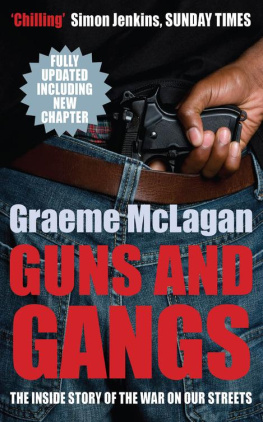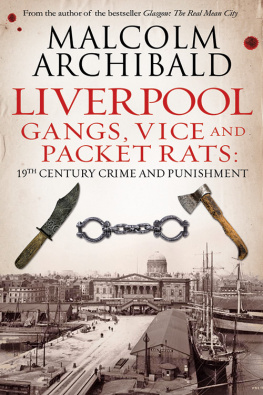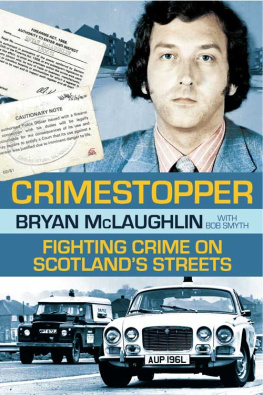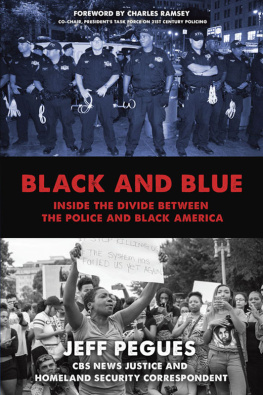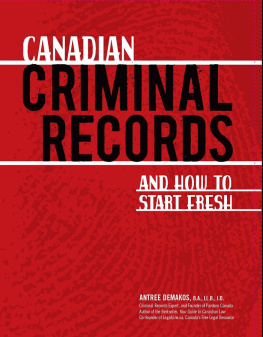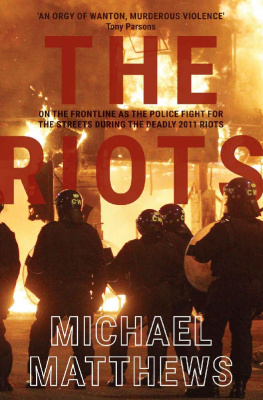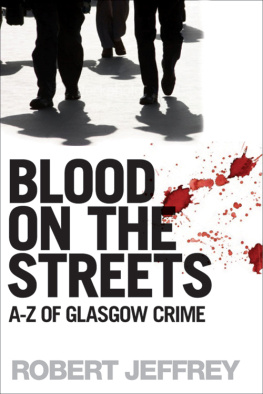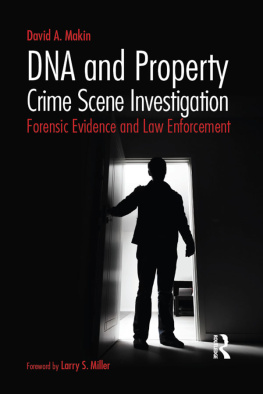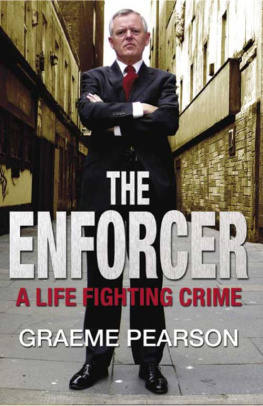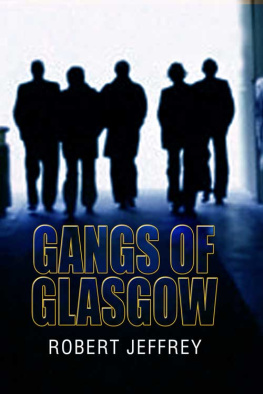This book is about gun crime across the UK, but it focuses on London where the black communities are adversely affected, as they are in other areas, particularly Manchester, Bristol, the West Midlands and Nottingham. Some argue that it is wrong to concentrate on particular ethnic minorities that doing so unfairly stigmatises whole communities. However, it is a sad reality that about seventy per cent of the capitals gun murders and shootings involve so-called black-on-black violence, and Scotland Yard set up the successful and highly regarded Operation Trident to deal specifically with gun crime in the black community, whether by Jamaicans, Africans or British-born blacks.
Of course, only a tiny minority of people in these communities are gun criminals. But the effect they have on other people is immense in terms of lives lost, injuries, and devastated families. Black people across the country are now cooperating with police in an attempt to reject the gunmen. Large amounts of public money are being spent on tackling the problem, either through funding community projects aimed at preventing young people turning to the gun, or on the detectives hunting down the gunmen.
It is a largely untold story the interaction of police, gunmen and the wider black community. For those upholding the law, it is the most challenging detective work possible. Not without reason is this kind of gun crime described as disorganised and chaotic. Most of the gunmen are totally callous, valuing lives cheaply, including their own. Some will kill because they have been shown disrespect. Others behave like Mafia gangsters of old, styling themselves as dons. In one case described in this book, a man was greeted as an old friend with a big hug, and then, a couple of minutes later, hit with five bullets, eventually dying. But there are other surprises. In a trial at the Old Bailey, the defendant, a big man described as the baddest gunman in his area, sat through much of his trial behaving like a vulnerable young child. For hours on end, in the dock, he could be seen sucking vigorously on his thumb.
My deep thanks go out to the very many police who helped tell it like it is, and to all those in the black community who are trying to do something about the gun crime problem. Grateful thanks also to several journalists, including Jason Benneto of the Independent, Kurt Barling, and to reporters working at the Old Bailey. The following books were also very useful for background: Laurie Gunst Born Fi Dead (Canongate); Jon Silverman Crack of Doom (Headline); Tony Thompson Gangs (Hodder & Stoughton) and Peter Walsh Gang War (Milo Books).
The ring on the doorbell of a maisonette in the summer of 1998 was to change attitudes to gun crime forever. Until then the police and black communities had been at each others throats in south London. But what happened at that address near Brixton was so horrific, and was followed by such brute terror across the capital, that it shocked police and blacks into working together to beat the gunmen.
It was just after ten oclock at night on Friday 25th June when Kirk Johnson went to answer the door of his familys maisonette in Cressingham Gardens, Tulse Hill. As he went downstairs, he heard someone outside shout next door neighbour. He opened the door and was confronted by three men, one of them armed. They barged their way inside, the man with the gun shouting what money you got? and Ill kill you. They grabbed Johnson, forcing him upstairs to a bedroom where his wife Avril was watching television with their daughters, eighteen-month-old Zhane and Ashanti, aged six.
The youngest of the intruders was told to turn up the sound on the television. It looked as though something terrible was about to happen. Dont move shouted the excited gunman, pushing the weapon into Johnsons face. But bravely, Johnson disobeyed. I grabbed hold of it, he said. Then I was attacked by his friend. The second man was wielding a knife and jabbed him in the neck, causing blood to flow profusely. His attackers then warned: If you dont give us the money, well kill you. They tore rings from the couples fingers. A terrified Johnson blurted out that there was about 200 in a cupboard drawer downstairs.
As the two young children were bundled under the bedding, a very frightened Avril told her husband to give the men whatever they wanted. Then they tied up the Johnsons, binding their hands and feet with electrical flex. Avril who was a successful DJ known as Miss Irie and the sister of 1980s reggae singer Tippa Irie was forced to lie on the bed, with her husband forced to lie next to her. Johnson saw the gunman hand his weapon to the man with the knife. He was pointing the gun over us, said Johnson. I put my head a bit lower. I heard two shots fired. He played dead, and somehow survived, although he was left with a vivid scar on his neck where the knife had cut. Avril had no such luck. The gunman had held his weapon to her forehead and fired. Then he fired a second time, almost certainly aiming for her husband on the other side of the bed. He missed, and the bullet passed through the edge of the mattress, ending up in the bedroom wall. Avril Johnson died later in hospital.
The police had no idea who the killers were. Detectives had been running a secret intelligence cell gathering information about black murders and shootings in south London. But none of their regular grasses came up with anything useful. The officer put in charge of the investigation was Detective Chief Inspector Steve Kupis who appealed for help from criminals to give up the people responsible. If robbery was the motive, this was a most callous act a horrendous thing, he said. They had already stolen some property and the victims were powerless. For this woman to be shot in the head like that is beyond comprehension.
It was not disclosed then that police were linking the attack with a terrible rape and attempted murder ten days before in nearby Clapham. There was no security or entry-phone system to the block of flats where a 24-year-old man lived on the third floor. He lay on the sofa in the living room, chatting with his girlfriend, aged eighteen, when there was a knock on the door. The young woman went to answer it. She could see through the glass that the person on the other side was black. Although she did not recognise him, she opened the door. A man wearing a black baseball cap grabbed her wrists, forcing her arms behind her back, propelling her back towards the living room. Two other men entered: one wore a red and black baseball cap, the other had a gun in his hand.
The gunman went towards the sofa where the man still lay and ordered him to get up and lie on the floor. He picked up the mans mobile phone, put it in his pocket and said, You have something for me. The man replied that he did not know what he was talking about. His feet were tied with electrical flex but he struggled as they tried to tie his hands, and was hit on the back of his head with the gun. The intruders then searched the flat, throwing things around, apparently looking for either large amounts of cash or drugs. They found a small amount of money but threatened the man, saying: Ill shoot you if you dont give me more. After telling them there was some more cash in a wardrobe, he was dragged into the bedroom and they took what was there, still believing there was more to be found.
Meanwhile, the mans girlfriend was dragged into the kitchen where she lay on the floor while one of the men searched her, finding a 20 note. He then pulled out his penis. She pleaded with him not to rape her, but he was undeterred. After finishing with her, he pulled her to her feet and dragged her back to the living room where her hands were tied with flex. To her horror another of the men dragged her back to the kitchen and, after hitting her in the face, forced her to perform oral sex on him. Her boyfriend, still in the bedroom, was being kicked and punched by the men who were frustrated at finding so little cash and no drugs. As he lost consciousness he saw that one of them had a knife. After the attackers left, the young woman managed to free her hands to find that her boyfriend had been stabbed, once in the back and once in the chest. The wound at his front had pierced a lung. The couple staggered to an upstairs flat where a friend called an ambulance.

